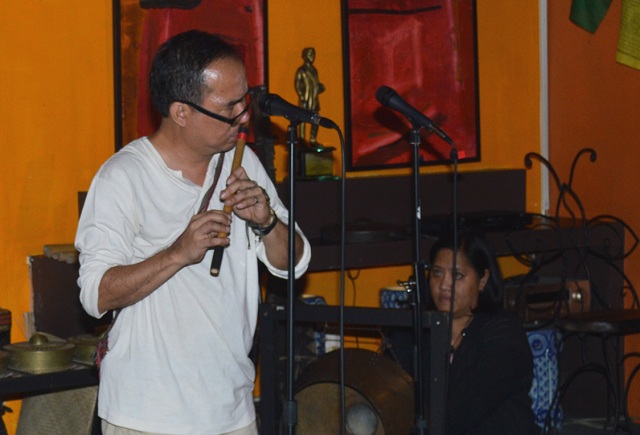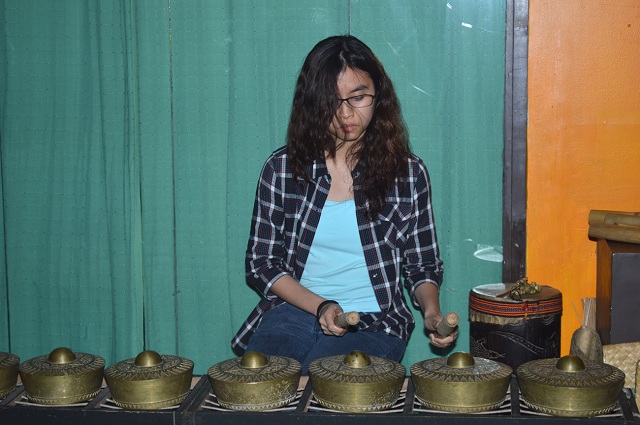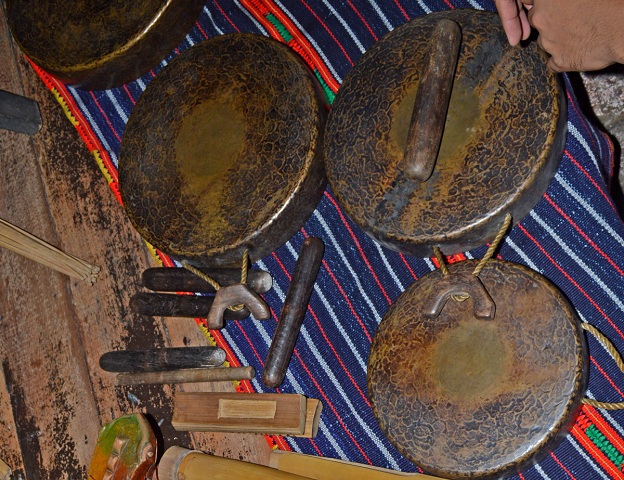The sounds of bronze and bamboo: Our musical heritage, and why it's important
The Philippines has such a rich cultural heritage that it is sad how many of us have no knowledge about the music of the Tbolis, Negritos, Mangyans, and other indigenous tribes. What a tragedy that so many Filipinos have never experienced playing—or even listening to—native musical instruments such as the kulintang, tambuli, gabbang and hegalong.
Leo Emmanuel Castro, a bamboo musical instrument maker, laments what he calls the Filipinos’ poverty of cultural experience.
Castro is also executive director of Sanghabi (“one weave”), a cultural non-government organization that conducts workshops on indigenous rhythm and movement and baybayin, the ancient script of the Filipinos.
Castro notes that whenever he asks people to name musical instruments, the usual answers are: piano, guitar, and drums, and not the indigenous instruments of our country.
“Wala sa kamalayan ng mga kabataan 'yan,” he says. “Kaya kailangan ipakilala ulit, tapos ituro kung saan siya galing, just to make them aware that we have a rich tradition in instruments.”
Castro understands why many Filipinos are unaware about their musical heritage: indigenous musical instruments are not easily found in schools or stores and authentic tribal music is not played on the radio.
“Kung maririnig mo man, bihirang bihira. It's not the popular form [of music]. Kulang sa pagpo-promote ng indigenous music, especially in the urban areas,” he says.
The sound of indigenous music

It's a common observation, says Castro, because both use the pentatonic scale, the five-tone scale found in most world music.
Castro explains that many people cannot easily grasp the essence of indigenous music because it does not follow the seven-note "do re mi" musical scale.
In the Philippines, he says, different tribes have different musical scales. “Bawat tradition may sariling scale. Walang standard scale dito sa Philippines.”
And sometimes what is played is not authentic tribal music at all. “'Yung authentic 'yun 'yung talagang mismong musicians from that tribe will play it. Kasi minsan what makes it not so authentic is may mga embellishments, may nag-aadjust [ng musical piece],” Castro says.
Letting kids learn about indigenous music

“When they study all these instruments, picture lang sa libro. Even music, ang pagtuturo ay music theory. Hindi 'yung actual na pagtugtog kasi for some reason walang mga instruments,” he says.
Castro suggests that schools start with affordable bamboo instruents. “Study its context, then study how it's played,” he says.
He feels that access to musical instruments should not be a privilege reserved only for a few.
”Kahit pala ang pagtugtog ay privilege dito sa atin. Eh sa katotohanan kawayan lang yan. Nagkalat yan eh. Bakit ganoon?” he asks.
Castro insists that every person has an innate musical skill that can be harnessed by heightening one’s sense of hearing and feeling.
"Medyo kailangang patalasin yung pakikinig at pakikiramdam," he says. "Patatalasin mo yung listening and feeling skills mo and the rest will follow, kung anong gusto mong intention na tugtugin."
Castro says the key to improving one’s musical senses is by learning new beat patterns by practicing and jamming with others. Indigenous musical instruments are usually not played solo.
"Karamihan sa mga [indigenous] instruments hindi siya puwede tugtugin mag-isa, kailangan may kasama. It also emphasizes the communal nature of music," says Castro.
He adds that anyone can learn to play indigenous musical instruments if the desire is there.
"I'm not a musician, really," he says. "I started out as a mechanical engineer then took up masters in anthropology. I became a musician by accident."
Instruments

Idiophones “produce sound from the substance of the instrument itself (wood or metal),” says Dioquino, and are subdivided into whether they are “struck, scraped, plucked, shaken, or rubbed.”
Gongs, such as the flat gangsa of the Kalinga, or the bossed (having a circular raised area) kulintang, are idiophones. Idiophones can also be bamboo “xylophones, drums, quill-shaped tubes, stamping tubes, scrapers, buzzers, and clappers,” says Aquino.
Aerophones are wind instruments such as the tonggali, the nose flute of the Kalinga; or the Tagalog tambuli, which is made of carabao horn and used to send messages over wide areas.
Chordophones are stringed instruments such as the tube zithers of the Cordilleras, Mindanao and Palawan, with strings etched out of the body of the bamboo; and the duwagey of the Manobos and the Bilaan, a fiddle made from a coconut half-shell covered with a leaf, bark or animal skin.
Membranophones—or drums, with animal skins stretched over the instrument—are found throughout the islands, writes Dioquino. “They are variously shaped—conical, cylindrical, goblet shaped, barrel shaped.” Dioquino adds that drums are seldom played alone, except to make announcements over long distances. An example is the sulibao and kimbal of the Bontok and Ibaloi.
Identity

He urges Filipinos to take time to rediscover the musical traditions, language, and writing systems created by our ancestors.
“Konting pagtingin paloob para mapahalagahan yung tradisyon na puwede natin pag-ugatan,” he says. “Balik-tanaw, at doon tayo uugat at doon natin pagtitibayin yung ating pagkatao.
“We don't do enough looking inwards to rediscover who we are through what has been achieved by our forbears. 'Yung mga ninuno natin, ginawa na nila ito, na achieve na nila yan.
'Yun ang naghubog sa atin. Ito ang nag-shape sa atin bilang tao.”
And by looking inwards to learn about the culture and traditions that have shaped us, we will be able to see more clearly that there is much about our heritage to be proud of.
“Ipagmalaki yung pagiging Filipino,” says Castro. “We are a great people.” — BM, GMA News



